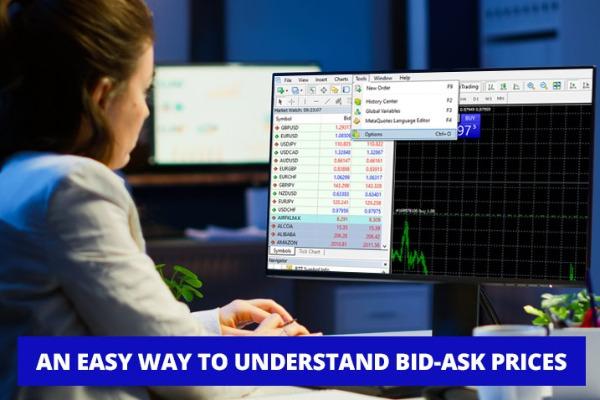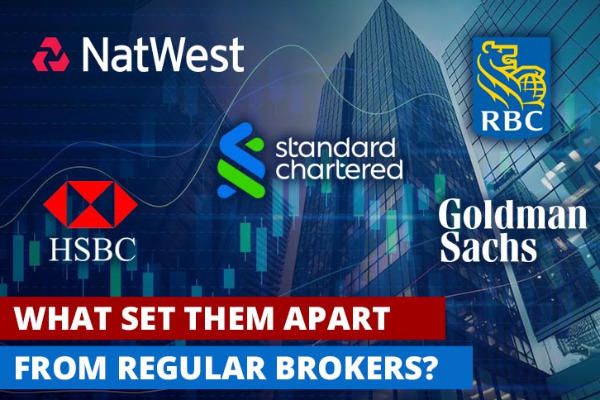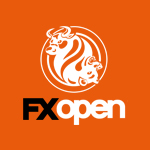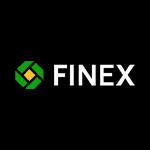Forex trading course comes in many shapes, but is it true that paid courses are always better than the free ones? Let's dive into the topic.
Forex trading is undoubtedly an attractive option for anyone with a laptop due to the high liquidity, 24/7 accessibility, and low capital requirements. While there is a big opportunity to generate income in forex trading, it requires a set of skills, analytical thinking, and a lot of discipline. This is why not all traders who made their way to the forex market could end up with a million bucks. Luckily, financial companies and institutions have realized this issue, so they've been trying to fill this gap of knowledge by releasing both free and paid trading courses.

Today, there are numerous forex trading classes that you can easily access on the internet. Typically, these classes are offered by forex brokers as a part of their service or trading academies. The purpose is to educate traders and basically create a learning path that could lead them to a successful career. Trading courses are usually self-paced and often come in various forms, such as online videos, webinars, modules, trading simulators, forum discussions, and one-on-one learning with a mentor. The contents of the course are also usually adjusted to the needs of the traders themselves based on their background and expertise.
While there are plenty of options to choose from, not all of them are made equal and could fit everyone. In this article, we have summarized everything you need to know about choosing a good trading course and recommend 3 top trading courses to check out.
Selecting a Good Forex Trading Course
Before we start, it's important to understand that each person may have a different preference and needs when it comes to trading courses. For instance, if you are a complete beginner, signing up for an advanced trading course won't help you much. Apart from the actual study materials and curriculum, the cost of trading courses also varies from free to thousands of dollars in order to accommodate all types of students.
Generally, a good course must be able to encourage its students to develop their analytical as well as problem-solving skills in an effective and efficient manner. However, in order to decide which course to pick, you need to have more specific criteria to help you compare one option to the other.
The following are things that a good trading course should have:
- Continuous support and guidance for the students.
- Provides interactive and engaging learning materials.
- Emphasis on problem-solving.
- Provides good performance tracking.
- Personalized learning tips.
- Clear learning objectives and expected outcomes.
- Experienced mentors and/or authors that focus on the students' understanding and not just cramming information.
- Little to no conflict of interest through referral agreements.
- A track of positive reviews from previous students.
- Easy to be accessed on any device.
- Affordable cost for various types of students.
- A forum discussion with an active community to discuss and ask questions.
Recommended Forex Trading Courses
Based on the criteria above, we have chosen three of the top forex trading courses you can check out:
1. School of Pipsology by Babypips
Babypips is a popular website that offers an introduction to the world of forex trading while providing learning materials to improve skills in trading, all for free. Some of the contents include educational resources, an economic calendar, online forum discussions, news, and trading tools for worldwide readers. Babypips started out when its creators realized that there weren't many places where traders could gain structured information about the basics of forex trading. And so, in 2005, Babypips was founded.
If you visit the website, you'll see that there are a bunch of learning materials to choose from. The contents come in the form of written articles, so it might not be as engaging for the audience compared to other courses that offer tutorial videos. Yet, the guides are generally easy to understand and especially made with "beginners' language". It is worth noting that all of the contents are anonymous, so there is no support from dedicated authors.
There are also quizzes that you can take on the website, but keep in mind that this is a separate product that isn't directly related to each topic, so there is no emphasis that the students need to take it as a part of their learning process. In addition, you can track your performance rather easily. The website will tell you how many lessons you've completed so you'll see how much you've progressed.
Pros
- Beginner-friendly
- No cost, completely free online course
- Good performance tracking
- Highly accessible
Cons
- Information is very basic
- The authors are anonymous
- No video materials
- Strong conflict of interest with affiliated brokers
- Heavy on technical analysis
- Lack of personalized guidance and support
- No downloadable course notes
2. Investopedia Academy
Investopedia Academy is a popular trading education platform that offers a wide variety of lessons, including trading, finance, investing, cryptocurrency, and more. The platform was first introduced back in 1999 by Cory Wagner and Cory Janssen. In a nutshell, the platform was designed to accommodate the learning needs of traders and investors who are looking to develop professional skills in the trading space.
Moreover, Investopedia Academy is a paid course, so the students must pay a fee of GBP144.08 in exchange for a lifetime membership and a 30-day money-back guarantee. You can access the platform by using any online browser. Investopedia Academy offers lessons that are not timed but self-paced. Anyone looking to acquire trading knowledge can join the course and choose the lesson that's suitable for them, ranging from the basic level to advanced learning.
Unfortunately, despite being a paid online course, Investopedia Academy still lacks a couple of crucial things. Firstly, there seems to be no active forum, live support, or direct contact with the mentors. Instead, the platform offers a lot of self-learning material with a ticketing system if a student gets stuck.
Also, there is no performance tracking system, no quizzes, and no personalized tips for the students enrolled. The students basically have to do almost everything independently, starting from taking notes to choosing courses. All of the contents are presented in video formats with third-person camera shots that make it look like an actual classroom. There is also no problem-solving mechanism, but rather the platform only focuses on providing the students with a series of information. Conflict of interest also seems to be an issue in Investopedia Academy.
Pros
- Affordable pricing
- Credible authors and mentors
- Financial support for students and the US military
- Lifetime access to all learning materials
Cons
- The information is mostly very basic
- Heavy on technical analysis
- No personalized guidance and support for the students
- No downloadable course notes
- No quizzes or exams
- Lack of direct support from the mentors
- Bad interactivity and engagement with the students
- Lack of an active community
3. Logikfx
Logikfx is a leading source of finance, trading, and investment education platform that was first developed in 2013 and released in 2017. The platform offers various forms of services including trading courses, economic indicators, trading blogs, and more. Logikfx aims to provide a fun and engaging way to help the readers understand financial-related topics regardless of their background and expertise.
Logikfx is a paid course and currently is priced at 199 GBP. This amount is pretty costly in general, but compared to the previous courses, Logikfx offers the most complete service and products. The contents in Logikfx are presented in the form of video lessons that focuses on the students' understanding (instead of just memorizing) with guided annotations for every example. Not only that, but the platform also offers over 400 dynamic questions via the quiz builder application. The company claims that hundreds of new questions are added every month, minimizing the chance for the students of getting the same question repeatedly.
Moreover, Logikfx offers an excellent performance tracking system with a clear goal of how many lessons are left before completion. This could motivate the students to keep going and finish their lessons as soon as possible.
The platform also gives personalized learning tips for all of its students. For each video or lesson, the students will receive feedback and recommendation on which lessons need work and which ones they're good at. On top of it all, students can interact with a growing active community through various platforms such as Telegram and YouTube.
Which One is Better: Free or Paid Courses?
Based on the explanation above, we can conclude that each trading course is different, particularly in terms of content, support, and cost. Whether you want to register for a free or paid course is completely up to you. However, high-paying courses that cost above a thousand dollars are mostly unattractive these days because there are already a bunch of excellent learning courses online that you can access for lower fees and even free of charge. Unless it offers one-on-one instruction with professional mentors or other similar premium benefits, it is not recommended to pay more than a few hundred dollars for a trading course.
After all, we need to remember that forex trading is not all about technical skills. You also need to be smart psychologically and have a good amount of experience with the market. This is why apart from taking courses, it's also important to practice your trades. If you're new, you can try using a demo account while simultaneously sharpening your understanding by signing up for a forex trading course.

 Dedicated FREE FOREX VPS
Dedicated FREE FOREX VPS Free FOREX Virtual Private Server
Free FOREX Virtual Private Server MT4 Demo Contest, Get $500
MT4 Demo Contest, Get $500 Sign Up for an Account, Claim 60% Deposit Bonus
Sign Up for an Account, Claim 60% Deposit Bonus Free MT4/MT5 VPS 2024
Free MT4/MT5 VPS 2024 Send E-mail and Get Free Merchandise
Send E-mail and Get Free Merchandise $1K Refer a Friend Bonus for Pepperstone Pro clients
$1K Refer a Friend Bonus for Pepperstone Pro clients Maximize Your Earnings with 100% Deposit bonus
Maximize Your Earnings with 100% Deposit bonus Trade to Win, $5,000 Monthly Demo Contest
Trade to Win, $5,000 Monthly Demo Contest Claim 30% + 15% Deposit Bonus from LiteFinance
Claim 30% + 15% Deposit Bonus from LiteFinance











